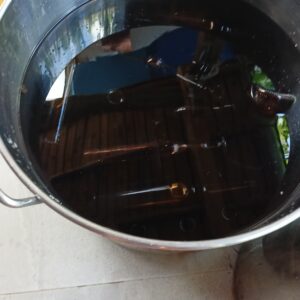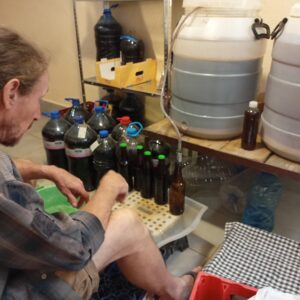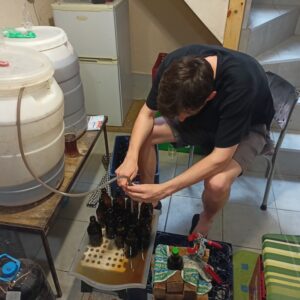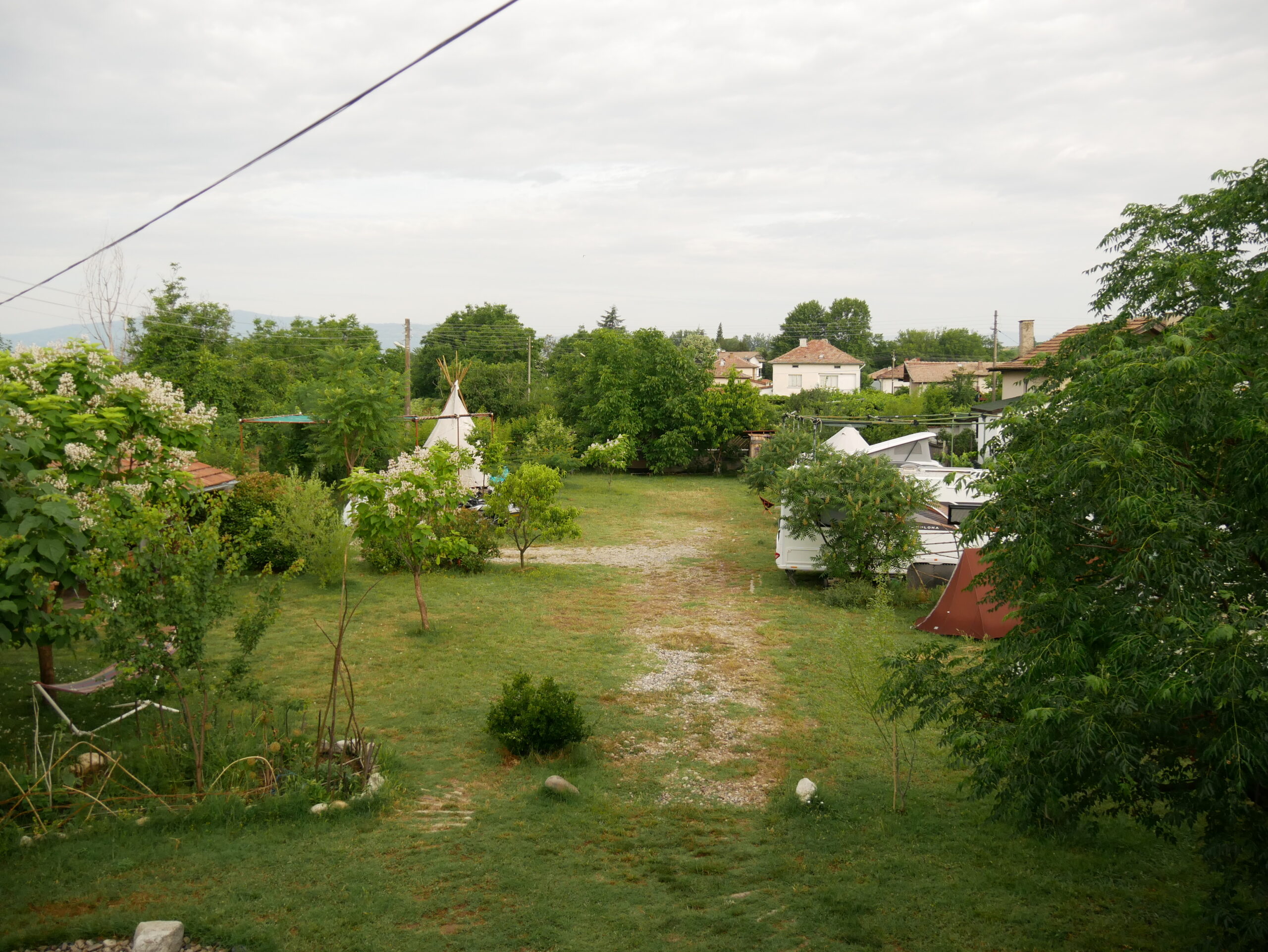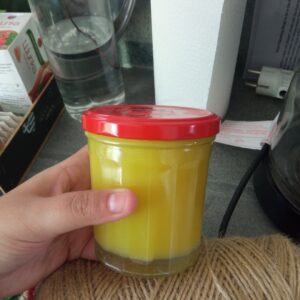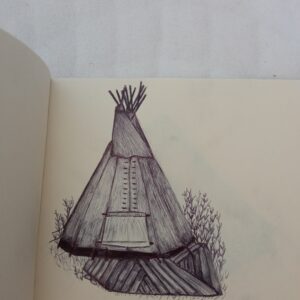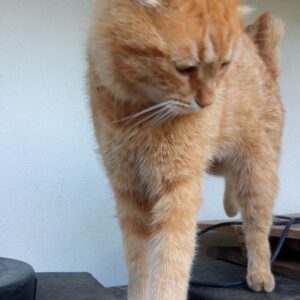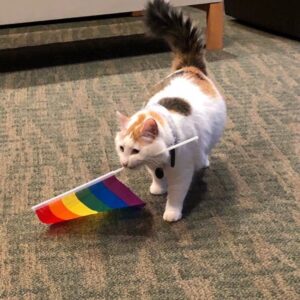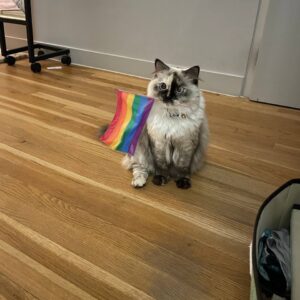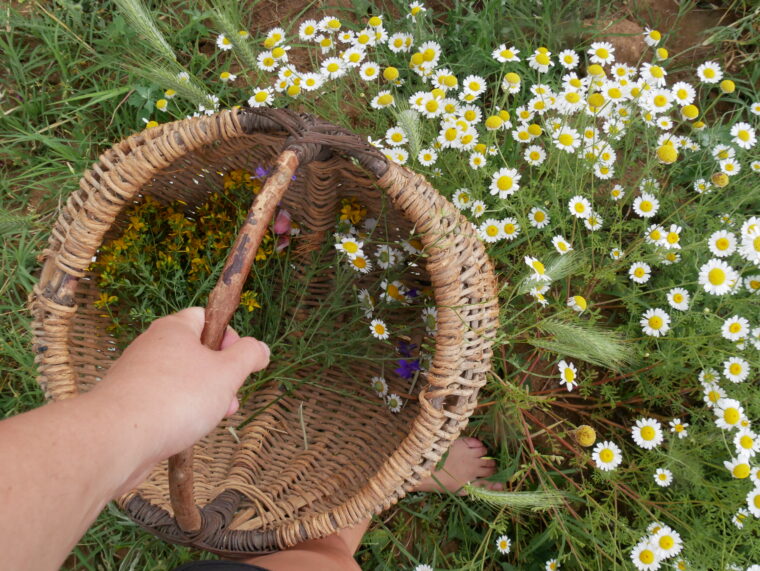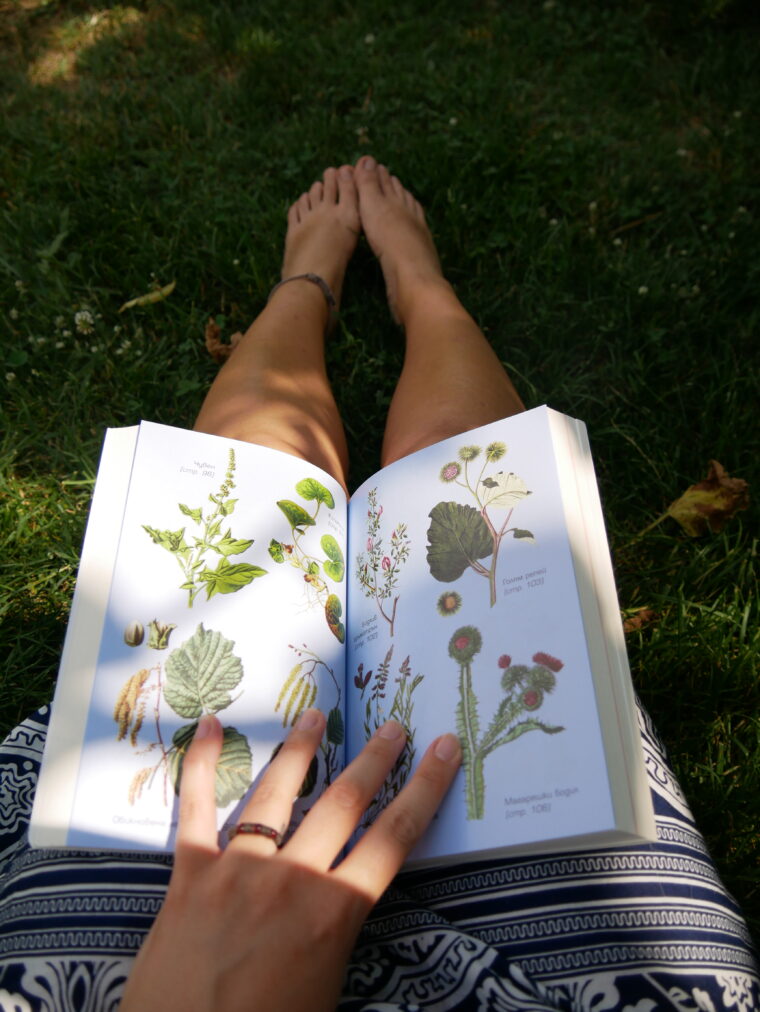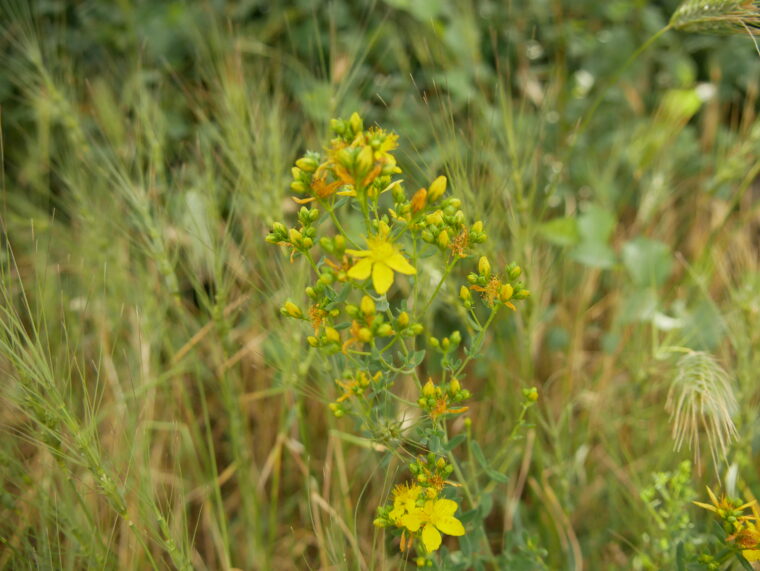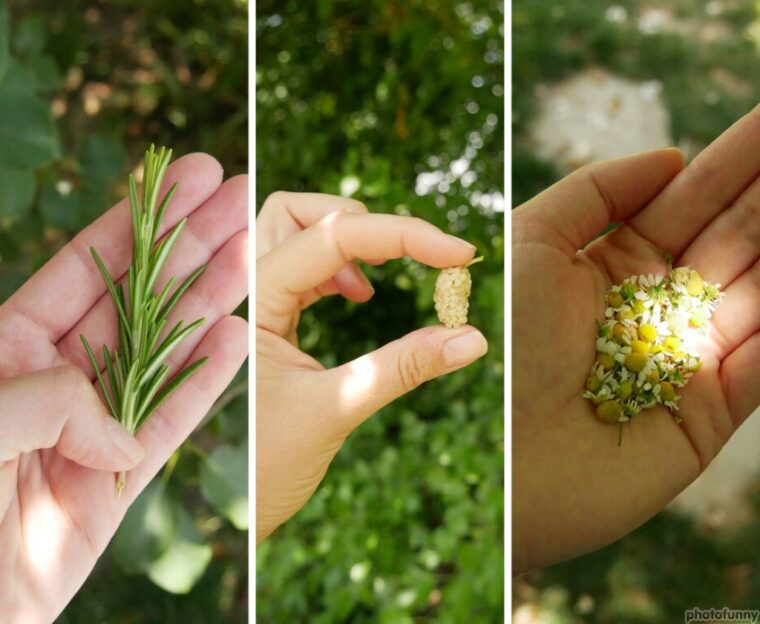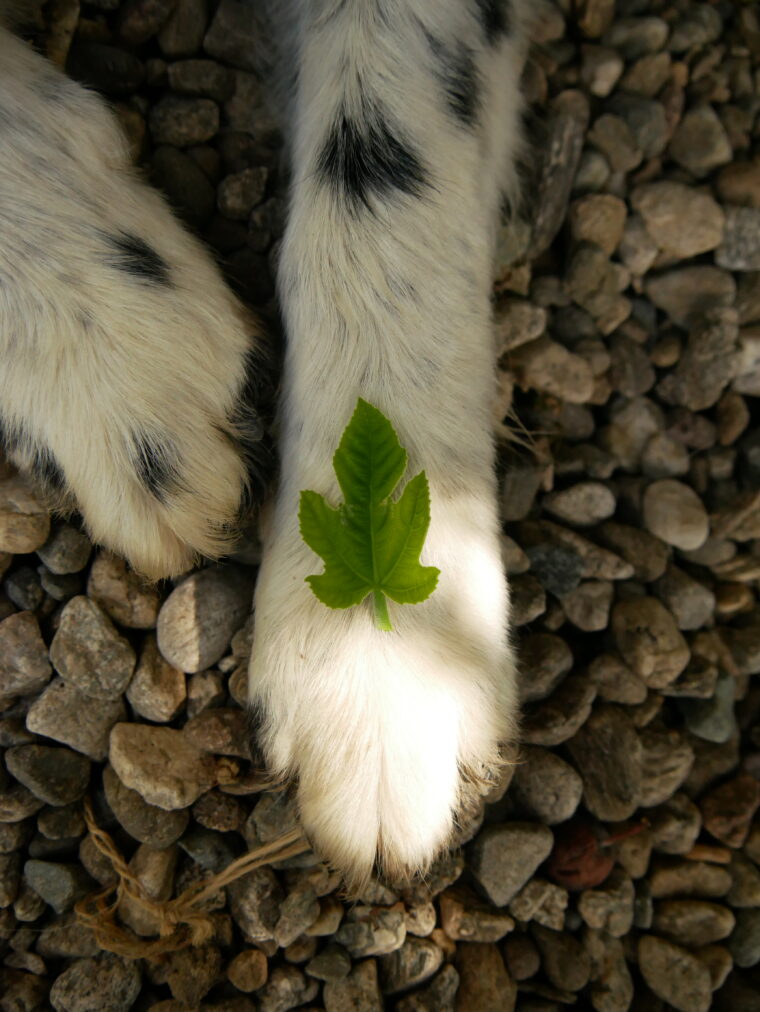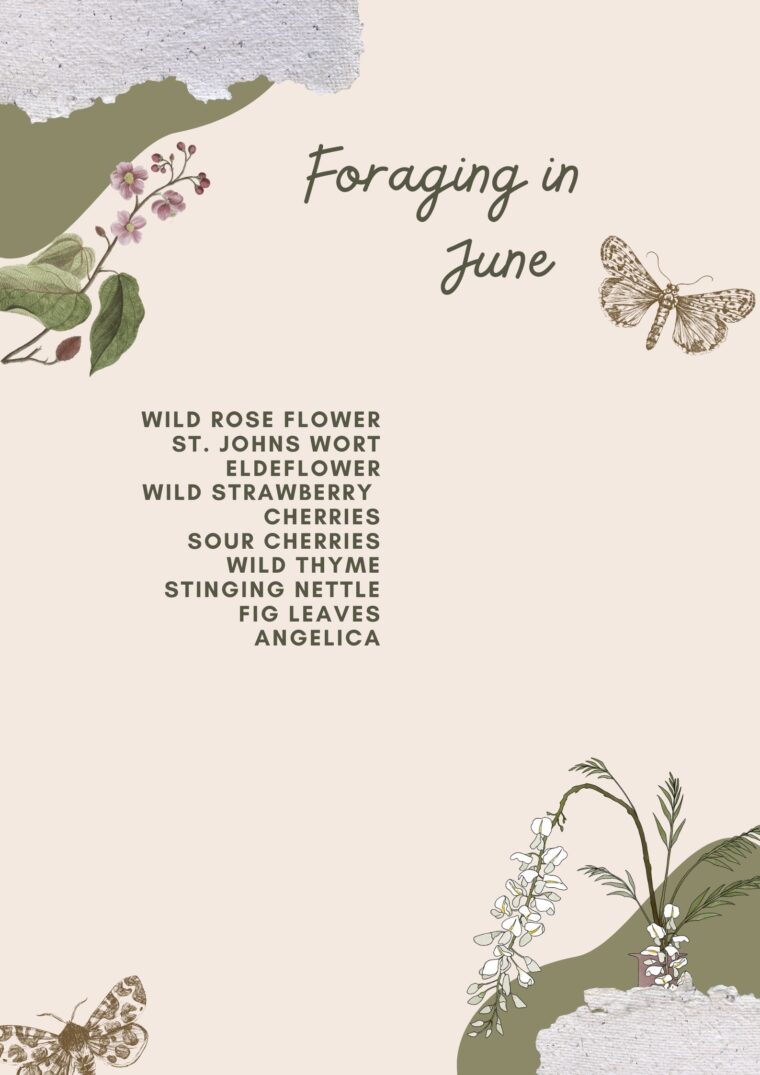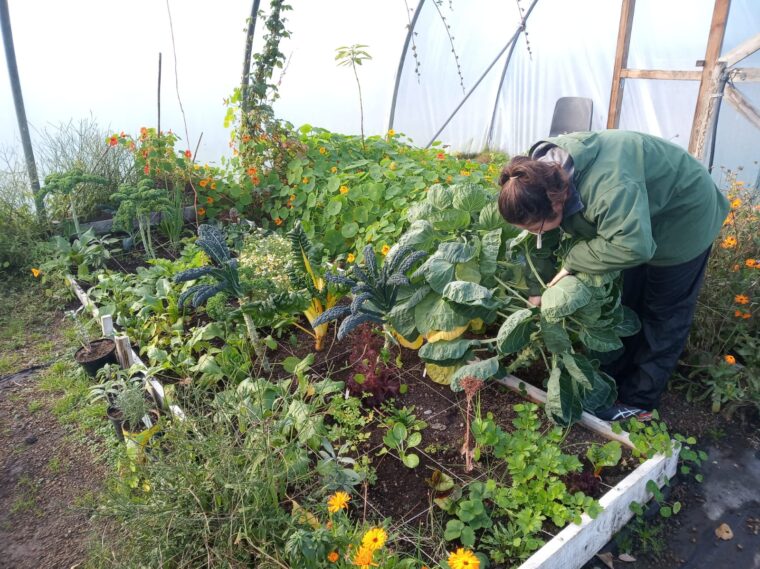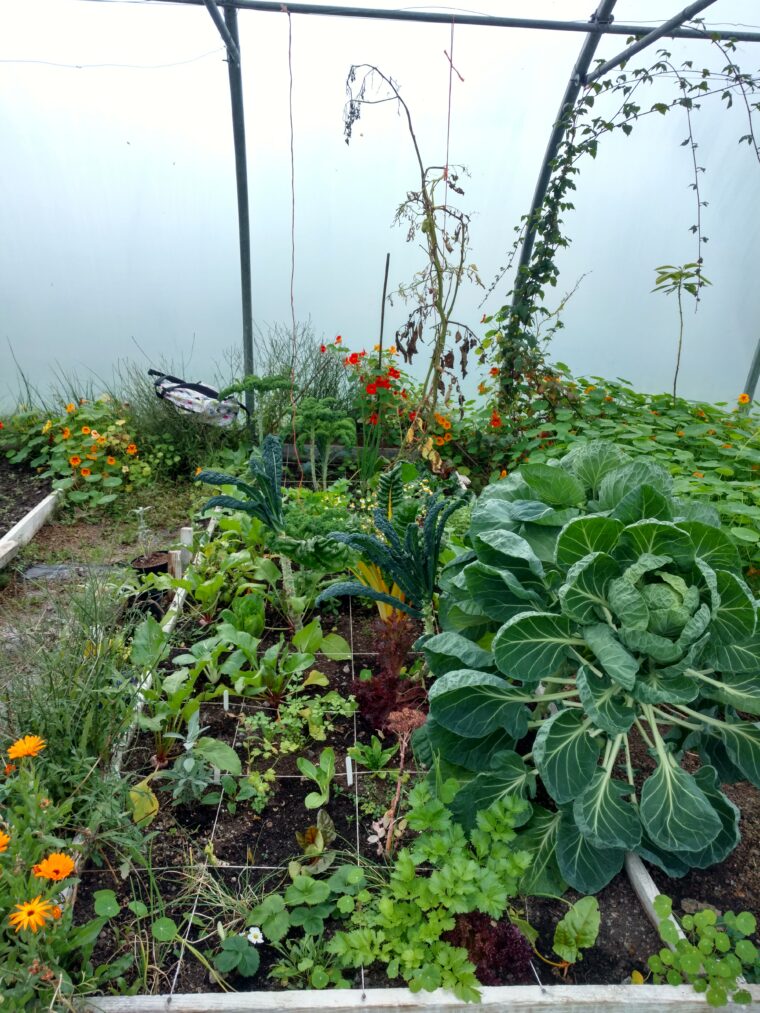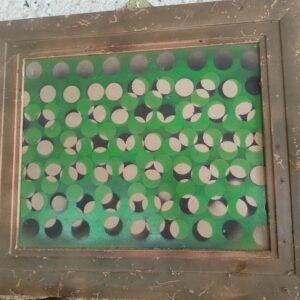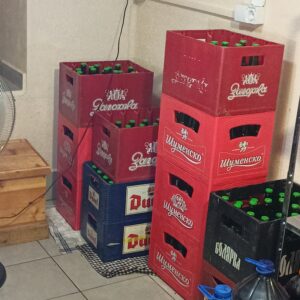Mali:
A sunny hello from Sofia!
Can’t express how happy I am to finally be here (exactly a year ago I was still far away in Argentina with corona blocking the way to Bulgaria). First things first: some days of recovering from a 42-hour bus ride, acclimatizing to the unlikely hot weather here (35 degrees in spring time!), getting acquainted with the chaotic city vibes and deciphering Cyrillic wherever I go. The focus is slowly shifting now to the actual reason for which I came, to join Green School Village as an ESC volunteer, learning more about regenerative agriculture and permaculture in practice. Plus, hopefully endeavor climbing up the professional permaculture ladder to become a permaculture teacher! My name is Mali, born and raised in Amsterdam and accompanied by a nomadic spirit that is still very alive. Together with the other volunteers I will soon gladly meet in person, you will be able to read weekly stories on this blog for many more months to come, which I hope will spark some inspiration 🙂 More about me and the project in next week’s blog story.
Êro, êro! Welcome to week 9, which marks more than one month since I started my ESC with Green School Village.
This week we did different activities together and I wanted to share some of them with you. The one that I was most excited about was making a calendula balm with some homemade calendula oil. Back in Portugal, during the pandemic, I was really interested in natural cosmetics since I am truly keen on learning everything I can to be more self-sufficient in this unstable world. That being said, I enrolled in several soap-making courses and after a few months, I was making my own soap, conditioner and shampoo bars, solid deodorant, toothpaste, lotions, and perfume. I have this firm belief that considering the state of the world right now, with the effects of climate change getting more intense each day, we should reduce our overall consumption, learn how to say no to freebies, to trends and what other people are suggesting us to buy. The quantity of store-bought cosmetics that people hoard nowadays is insane, especially when we think that all of them come in single-use plastic containers and their composition is full of toxins that are harsh to our skin, our health and our planet. I have a fond love for natural cosmetics and was extremely thrilled when I heard that our hosts had a calendula oil that was ready to be used!
For those of you that read the blog and don’t know the properties of calendula, it has anti-inflammatory, antifungal, and antimicrobial benefits. It is really healing and soothing for the skin and is often used to heal mosquito/bug bites, eczema, dermatitis, and vaginal yeast infections. Making the calendula balm is also really easy! You just need to pick calendula flowers and infuse them in an oil of your choice, I recommend olive oil because it preserves its properties better. After storing everything in a glass jar, you should put it in a place that is dark (with no direct sunlight) and not so humid, for example, in the cupboard, and let it rest for a minimum of 6 weeks 😊
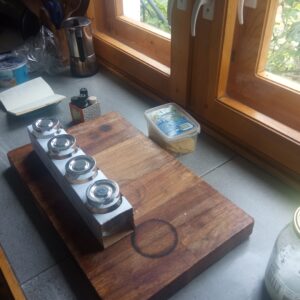
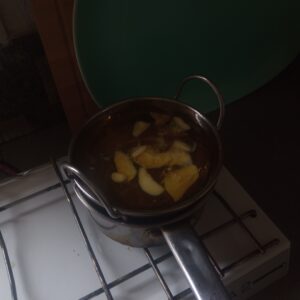
Layout of the ingredients, melting the ingredients in bain marie and final product 🙂
The ingredients that I used for the calendula balm were as follows: coconut oil, calendula oil, beeswax, lemongrass essential oil and orange essential oil. The process is not so complicated as well! You have to boil some water in a pan, put another container in the pan (bain marie) and include the ingredients there to boil. The quantities I used were ¼ of a cup for the coconut oil, calendula oil and beeswax – this will give it a silky texture and prevent it from being too solid/liquidy and actually have a balm consistency. When everything is melted, you can add 10 drops of chosen essential oil, I used lemongrass and orange not only because of the properties but because the combination of smells is just wonderful 😊 Finally, you mix everything and store it in a jar – it’s important to let it cool down and harden in a natural environment, so don’t store it in the fridge or freezer. And…..it’s ready to be used! The photos I took of the process were not the best, but I blame my second hand for the lack of quality! I hope I can share more recipes with you for you to try at home and be more self-sufficient with your cosmetics.
Additionally, I want to share with you the progress I have made with my drawings for the booklet – I thought I was going to be finished by now, but we had a lot of different activities going on and because I was a bit sick, I took some hours to rest. Attached you can see my first attempt at drawing the bell tent that they have in the space, but because my pen ran out of ink, I didn’t enjoy the final result and decided to make a second attempt, which I really enjoy! I also drew the tipi and hopefully next week I will have more drawings to show you 😊
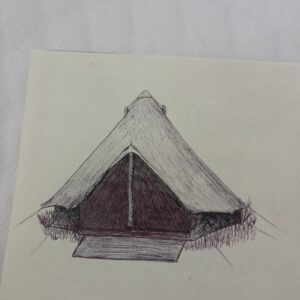
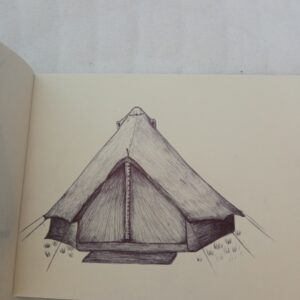
First attempt at the bell tent that I didn’t enjoy, second attempt and the tipi
To continue my fungi obsession, after last week’s blog entry, we had a few days of rain and had the pleasure of seeing this baby mushroom growing in the pot of basil. After identifying it, it is Coprinopsis lagopus and it is known for being a delicate one that dissolves in black ink after just 24h of living. It appears normally in soil rich in organic matter and doesn’t have a distinctive smell.
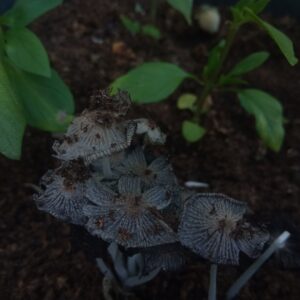
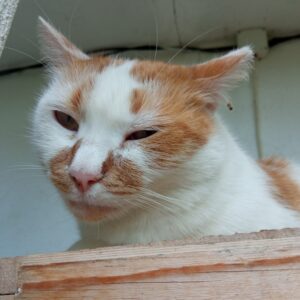
Coprinopsis lagopus and some cats 🙂
I hope you enjoyed my part of the blog and stay tuned for more adventures! I also wanted to finish by wishing a Happy Pride Month to my fellow LGBT and queer friends
Cats and LGBT – the best combination 🙂
Vyara:
Hello, hello!
Summer is in full swing, the hungry gap is long gone, and we are having the best time in Kromidovo! The other day we went to walk the dogs and we had a quick dip in the nearby reservoir. This place has the potential of becoming one of our favorite places in the area, saving us from the scorching heat, which is about to come.
This ‘’muddy puddle’’ (as one Scottish man called it recently 😂) is actually one of the few sources of irrigation for the nearby wine yards and greenhouses. This water source, like few others, is monopolized by a local man, who gives the water only to local people. Any outsider who has a market garden or a greenhouse, might have a problem obtaining water for their business. Does it sound dodgy and sketchy? Maybe because it is, but welcome to the future where the water will become one of the most valuable resources. I come from a very dry region in Bulgaria, drought and water scarcity is nothing new to me. This pressing problem is one of the reasons I started learning about permaculture in the hope of creating a self-sufficient homestead and teaching others how to be energy and water independent.
I had to stop myself from writing about the connection between water and permaculture, as this is a topic, we will learn more about in the upcoming weeks. Instead of getting ahead of myself, I want to try to explain the role of a water resource in the ecosystem.
Ever since I started going deeper into Permaculture, I started applying the permaculture principles to my day-to-day life, as an exercise where I challenge myself to go more in-depth into the topic. Principle number 1, ‘’Observe and interreact’’, has been the most useful and beneficial to me so far. I have learnt so much from nature, perceiving and drawing conclusions about the world and how it works. I would like to take the reservoir as an open water resource, for example. While we were hanging around it, I noticed that a lot of swallows were darting above the water`s surface trying (and succeeding!) to catch insects. The swallows were not the only birds we saw there, there were swifts, sparrows and hoopoes.
There were seahorses, tadpoles, butterflies and many different insects I don`t even know the name of. On the way we saw a fox, definitely not the only mammal living there, there are also rodents and ungulates. But let`s look beyond the obvious function of a reservoir, which is to enhance plant growth, it also provides a permanent dwelling for species that live within it. It provides a temporary home or breeding ground for multiple amphibians, insects and water-birthed organisms, which in turn become food for birds. Now imagine if this lake dries out, the people, the mammals, the birds and the insects will be forced to look for water somewhere else, and the nearest water resource is 100 km away. Don`t imagine, because this becomes a reality every year, in July and August. During the hottest months this biodiversity heaven dries out, forcing various species from the animal kingdom to flee and look for an alternative somewhere else. Fortunately, this is not an ecosystem collapse, but beings suffer from it. I know what are you thinking now, why is this happening year after year? Because of bad water management, monoculture cropping, no mulching, the list goes on and on… It is a living ecosystem suffering from the mistakes of human beings.
I am so mesmerized by this place, breaks my heart to see the water level going lower and lower every time we go there. But what could I do, what can anybody do about this? The answer is quite simple, you can do a lot actually. I am not going to go into too much detail about storing and retaining water in your homestead ect, because later on we will discuss it in the permaculture lectures and share it here with you. Today I will give you a few simple tricks to save water at home:
- Turn off water while brushing your teeth, classic!
- Take shorter showers, I know it feels nice and cozy under the hot stream, but face the reality you might be trying to avoid;
- Be smart with your water consumption, use the pasta water for your plants!
I won`t continue this topic any further, as I already took too much mental space with my ramblings, but check the link below for more tips.
The reservoir is not the only entertainment for us here, we go to mountain trails, where we pick up rubbish and get to know the local flora. And what better way to experience the flora than to eat it! yes, eat it 🙂 Anybody interested in foraging? I became a foraging enthusiast (or enthusiastic forager) in the last couple of years, my interest in wild foods grew exponentially ever since I did a course in Botany and Herbalism. I need to make one thing clear here, I am not an expert, I do it for the fun and to explore the places I visit. Foraged food is not my main source of food, it is an add-on to what I am already consuming.
I follow these simple rules every time I go into the wild:
- Forage responsibly, always take 15% or what is already there;
- Leave roots in the ground. No roots, no plants!;
- Identify everything with 100 percent certainty, or else you can harm yourself.
Let me tell you what I foraged this week and what I am preserving at the moment:
This week I harvested some fig leaves, which are drying and can be made into a tea or a sugar syrup. Fig leaves are surprisingly tasty in tea and are very beneficial for diabetics, as they aid in stabilizing blood pressure. There are plenty of wild figs around, and I harvest only the young leaves as they tend to be more aromatic.
I found a Rosemary bush and a Bay leaf tree in an abandoned yard nearby the campsite. Now is the most appropriate time for Rosemary and Bay leaf harvesting. Rosemary is good for hair growth, I dry it and make tinctures with vinegar, when the tincture is ready I mix 3tbsp of vinegar to 500ml of water and with it I rinse my hair. Bay leaf contains Vitamin A, B6 and vitamin C and I really like the flavor it gives to the beans soups, which I often make. Both Rosemary and Bay Leaf can be made into a tea, either separately or together. I pick only the young stems of Rosemary and young leaves of the Bay Leaf plant.
Chamomile grows wild here, in Bulgaria, and this year for the first time I had the chance to harvest it. I dried it for a few days and I am thinking of using it for tea and face cream as it has anti-inflammatory effects on the digestive system and skin.
Saint John`s Wort is another wild herb, also very popular in Bulgaria and almost every granny uses it to cure belly pains, to calm their nerves, arthritis ect. I usually make my own tea and I use St. John`s worth for the lovely bright yellow color. It is said to be very beneficial for curing depression, but taking too much of it is supposed to have the opposite effect.
Saint John`s Wort
My method for drying herbs and leaves is this: I spread the leaves and/or flower buds evenly on a cotton towel, in a dry, well-ventilated place, away from sunlight. Every second day I check to make sure the process is going as planned.
Last, but not least: mulberries! They are abundant in Bulgaria, we have so many mulberry trees and nobody eats them!… except for the birds. I have a feeling that mulberries will become the next superfood (if they are not already), they are rich in vitamin C, Iron, Potassium and Vitamin E. At the moment I am eating them fresh as I am rediscovering them and also because I don`t have the space and resources to dry them. They will be amazing dried and turned into a powder or frozen for porridge.
Helper 🙂
We also started creating materials for the website and I got an idea to create a poster with what you can forage in June 🙂
Another thing that has been on my mind for ages now is chicken poo 😀 Yes, you read that right and I am sorry I changed the topic so fast, but I feel the urge to share. I am on a hunt for chicken coops, where I can collect the waste from the chickens, as it is known to be a super food for the soil. Chicken manure provides a slow-release source of macro and micronutrients. Compared to other manures, chicken manure is higher in nitrogen, potassium, phosphorus and calcium. So far I have only used chicken pellets, which are dried and compressed manure, guaranteeing an even slower release of nutrients. Chicken manure is great for the overall health of the soil and it is extremely beneficial for leafy greens, this picture below proves it 👇
This is a square-foot garden I created a few years ago in Ireland. The idea behind a square foot garden is to divide a certain space into squares (hence the name) and plant different vegetables in each square. The aim is to create a small, but intensively planted vegetable garden. I had a standard size vegetable bed and over 10 species of plants in it, there were: strawberry, 2 types of kale, mangold, brussels sprouts, tomato, pumpkin, rocket, summer savory, tagetis, Nasturtiums, pack choi, lettuce, Marygold, onions, spring onions ect.
Word of advice, raw chicken manure is extremely strong for plants, always dilute it with water, ratio one-third manure to two-thirds water. use the liquid to water around the base of growing plants. Wish me luck in finding some!
That`s all folks, until next time! 🙂
Ewan:
Hey everyone 🙂 This is going to be a short entry from me, as I was away from the project for half the week, so only had time for a few activities. Most of the activities I was doing were outside in the garden, such as picking more fruit, gardening and continuing the work on the summer kitchen. I will be providing you with more updates on the summer kitchen in the coming weeks, when there is more to tell. But for now, I will be telling you the exciting news that the beer-making process is complete!
The first thing for us to do in this final step was to gather enough bottle caps for our beer. Since the hosts often have multiple brews going on at the same time, and the colour options for bottles is limited (green or brown), they decided to colour code different brews with different colour bottle caps. For the two brews we did this time, we went for brown bottles with green caps for the red ale, and green bottles with green caps for the pale ale. So, my first task was to spray paint 200 bottle caps after spreading them out on a flat piece of chipboard. The cool thing about this process is that afterwards, an accidental piece of artwork has been created!
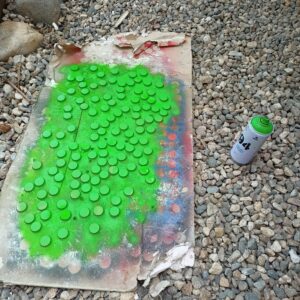
After sterilising the bottles, we proceeded to fill each one with the beer from the plastic containers. The process, along with the final product, can be seen in the images. The only thing left to do now is to taste the beer, so I can give you all a review next week 🙂
P.S. This beer is for home use only, and is not for general sale.
